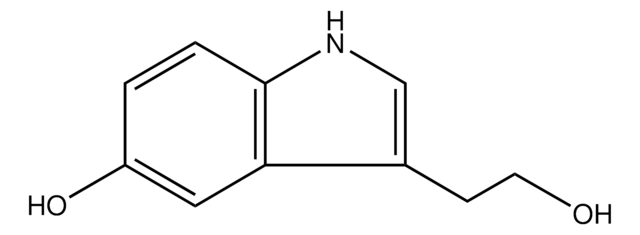SML3635
AGX51
≥98% (HPLC)
Synonym(s):
AGX 51, AGX-51, N-[3-(1,3-Benzodioxol-5-yl)-3-(2-methoxyphenyl)propyl]-N-(phenylmethyl)propenamide, N-[3-(1,3-Benzodioxol-5-yl)-3-(2-methoxyphenyl)propyl]-N-benzylpropanamide
Sign Into View Organizational & Contract Pricing
All Photos(2)
About This Item
Empirical Formula (Hill Notation):
C27H29NO4
CAS Number:
Molecular Weight:
431.52
MDL number:
UNSPSC Code:
12352200
NACRES:
NA.77
Recommended Products
Biochem/physiol Actions
AGX51 is an antagonist that blocks transcriptional regulators ID1-4 from binding basic helix-loop-helix (bHLH) transcription factor E47, causing ubiquitin-mediated degradation of IDs (10-40 μM for 2-48h; HCT116). AGX51 reduces cell viability, G0/G1 growth arrest, and a reduction in cyclin D1 levels in cultures (5-40 μM for 4-24h; HUVEC and HCT116) and suppresses ocular neovascularization in mouse models of age-related macular degeneration (AMD) and retinopathy of prematurity (ROP) in vivo (500 μg/mouse via twice daily i.p. or 1-30 μg/eye via intravitreal injection immediately and 7 days after rupture of Bruch’s membrane).
Storage Class Code
11 - Combustible Solids
WGK
WGK 3
Flash Point(F)
Not applicable
Flash Point(C)
Not applicable
Certificates of Analysis (COA)
Search for Certificates of Analysis (COA) by entering the products Lot/Batch Number. Lot and Batch Numbers can be found on a product’s label following the words ‘Lot’ or ‘Batch’.
Already Own This Product?
Find documentation for the products that you have recently purchased in the Document Library.
NFkB-signaling promotes glial reactivity and suppresses Muller glia-mediated neuron regeneration in the mammalian retina
Glia, 70(7), 1380-1401 (2022)
Paulina M Wojnarowicz et al.
NPJ breast cancer, 7(1), 58-58 (2021-05-26)
ID proteins are helix-loop-helix (HLH) transcriptional regulators frequently overexpressed in cancer. ID proteins inhibit basic-HLH transcription factors often blocking differentiation and sustaining proliferation. A small-molecule, AGX51, targets ID proteins for degradation and impairs ocular neovascularization in mouse models. Here we
Paulina M Wojnarowicz et al.
Cell reports, 29(1), 62-75 (2019-10-03)
Id helix-loop-helix (HLH) proteins (Id1-4) bind E protein bHLH transcription factors, preventing them from forming active transcription complexes that drive changes in cell states. Id proteins are primarily expressed during development to inhibit differentiation, but they become re-expressed in adult
Our team of scientists has experience in all areas of research including Life Science, Material Science, Chemical Synthesis, Chromatography, Analytical and many others.
Contact Technical Service








